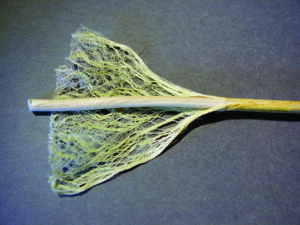By ROBERT JUMPER
ONE FEATHER EDITOR
We, as a community and government, continue to debate the merits of cannabis in its various forms. The plant has its proponents and its detractors.
The detractors claim that cannabis is a gateway drug that will lead to use of more “hardcore” drug use. We are all aware of the challenges that we are facing with opioid abuse. Marijuana has, for decades, been regulated as an illicit drug that will impair judgment to the point of being health- and life-threatening. We have all seen the educational videos like the vintage “The Terrible Truth” film that pro-ported that teenagers of the 1960s were becoming dope zombies (I think the popular term was “drug fiend”) who became addicted and enslaved to the “weed”.
The main psychoactive component in marijuana is THC (delta-9-tetrahydro-cannabinol). The cannabis plant produces THC, which can be found in the plant’s leaves and buds (americanaddictioncenters.org). There is science to support the premise that cannabis is addictive and produces effects that would impair normal decision-making. Reactions that have been documented include reactions from a sense of euphoria to acute psychosis.
There is a portion of our society that insists that cannabis, properly regulated and prescribed by a physician, will afford relief from pain for a number of chronically- and terminally-ill people. Testimonials for community members at a recent Tribal Council session indicate that there may be a legitimate medical benefit to the prescribing of marijuana for the relief of pain. Some states and municipalities are beginning to regulate and issue permits for the growing of cannabis to be manufactured into a form for consumption, whether that be smoking, vaping, edible foods, tinctures, or ointments. In those areas where cannabis is legal to grow, process, and distribute marijuana, security and compliance is the responsibility of the producer.
There are a number of products that may be made from cannabis. Besides smoking the leaves for pleasure, there are derivative products, such as rope, homeopathic pills and oils that do not share the THC levels that make the leaves so addictive and controversial.
Hemp or cannabis plant rope is made from the fibrous material in the stalk of marijuana plants. This part of the plant does not contain the potent concentrations of the chemicals found in the marijuana leaves and flowers. In one article I read, the author said that attempting to get “high” by smoking or consuming hemp rope would be like getting drunk on O’Doul’s (a beverage that tastes like beer but does not have the alcohol content or the content is so low that it is designated as a non-alcoholic beverage).
There is a huge consumer market for hemp products like rope and twine. Chris Bennett, reporter for agweb.com, said, “The sheer size of the hemp market is staggering. The total domestic value of hemp retail products sold in 2015 was $573 million, according to the Hemp Industries Association. In addition, the US annually imports $500 million of hemp and hemp-related products, adds Alex Green, GenCanna’s head of media and communications. The nutraceutical active ingredient global market is $20 billion per year, while the pharmaceutical active ingredient global market is $13 billion per year.”
The Eastern Band of Cherokee Indians has discussed the possibility of pursuing either the production of hemp products as a tribal business or allowing tribal entrepreneurs to develop businesses in hemp production. Maybe it is time that we get serious and develop a strategy to implement and capitalize on the earning potential of hemp in Cherokee. It is one of many opportunities to diversify our revenue stream that need cultivating (pardon the pun) for the continued economic success of the Tribe.




